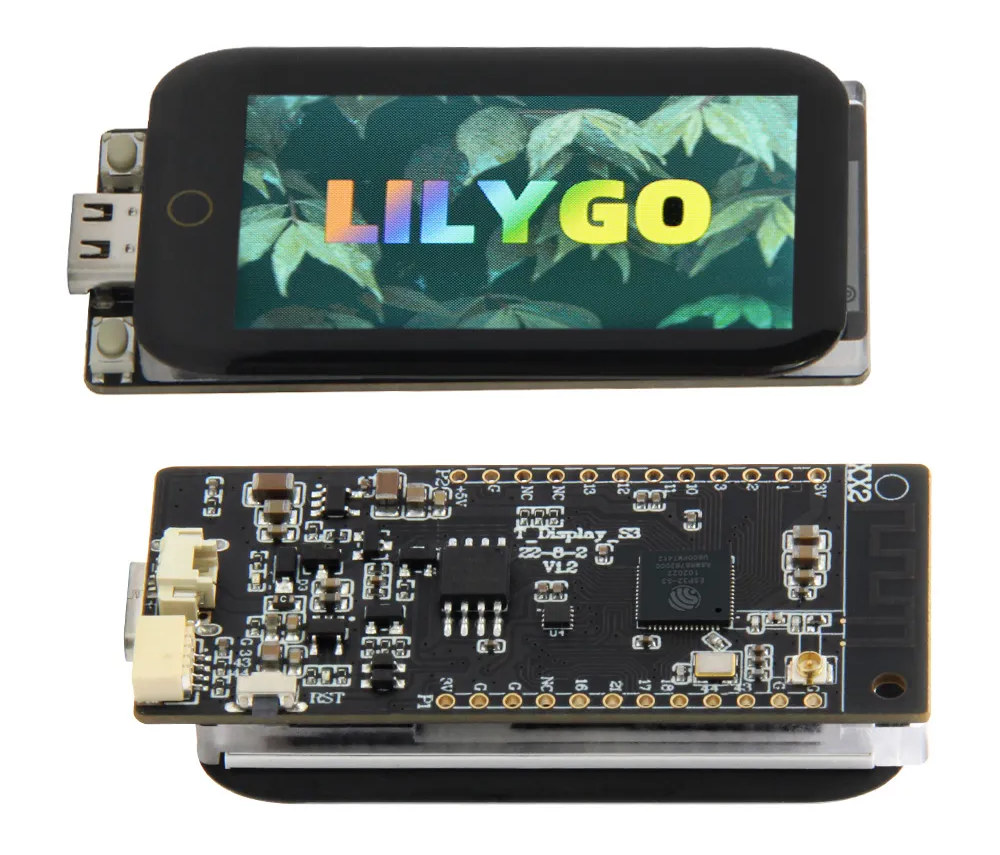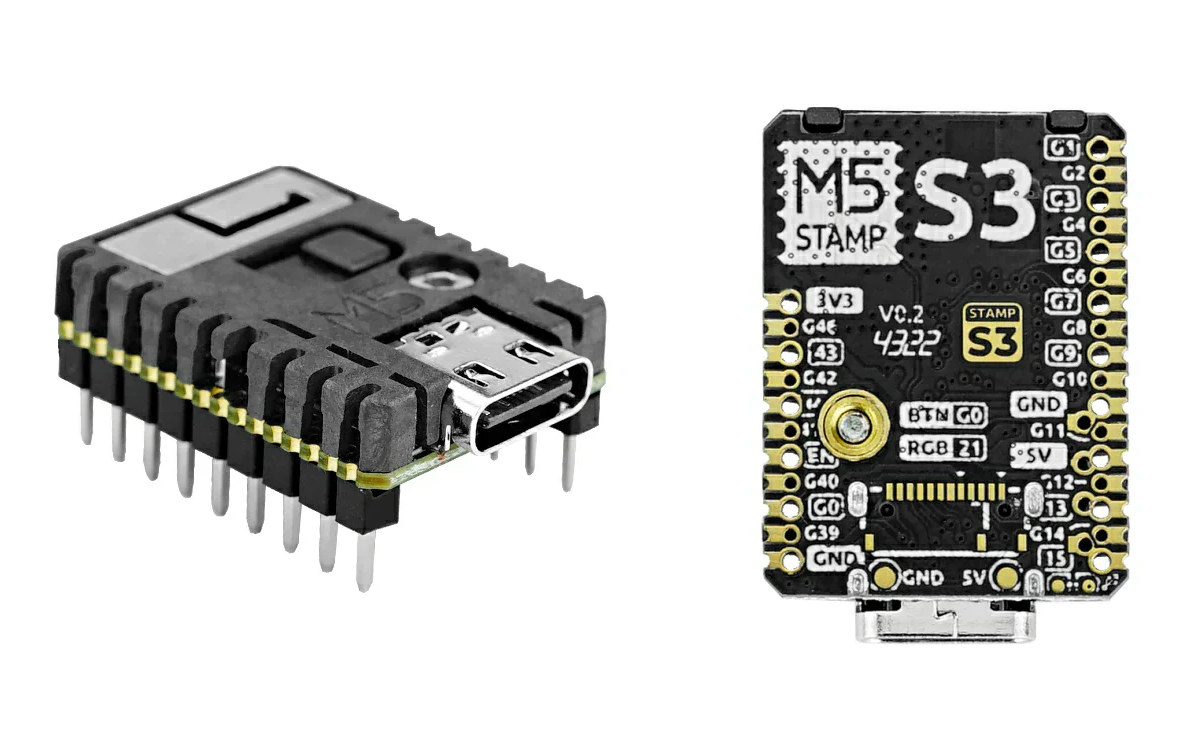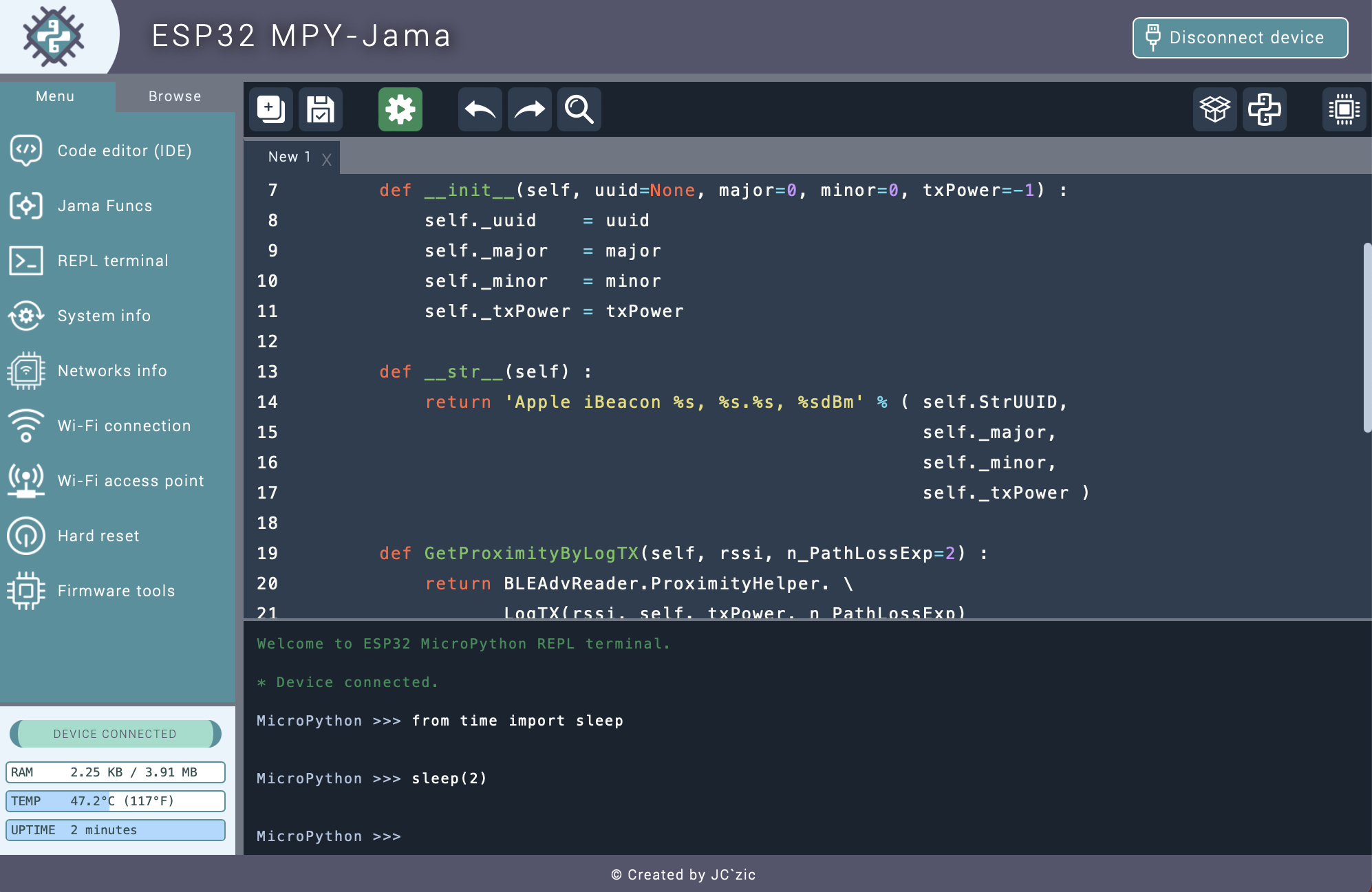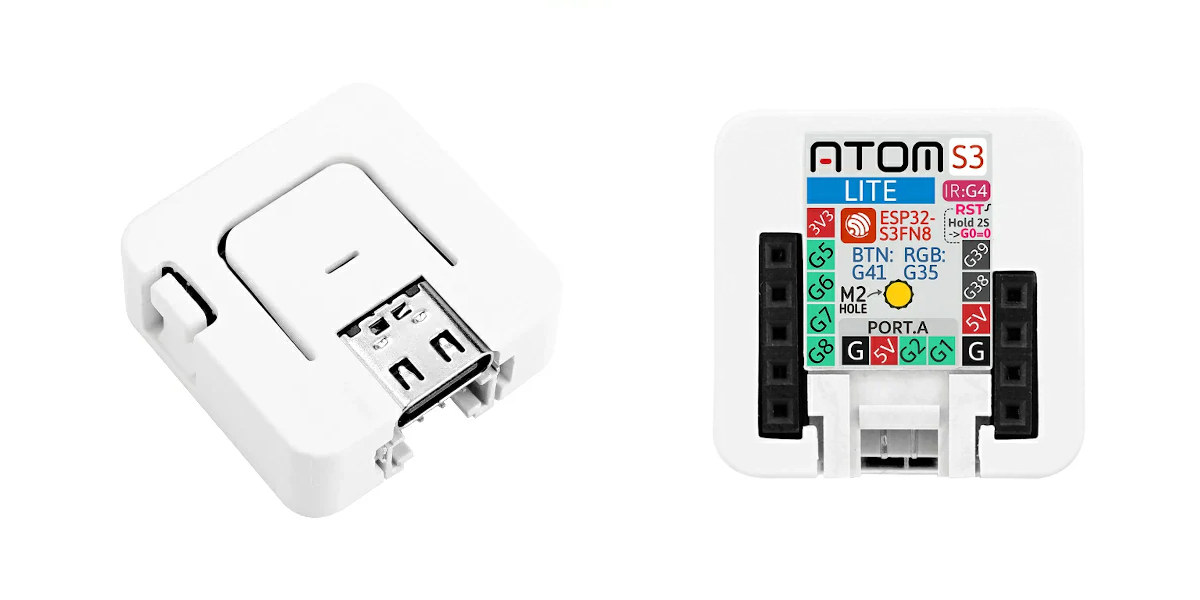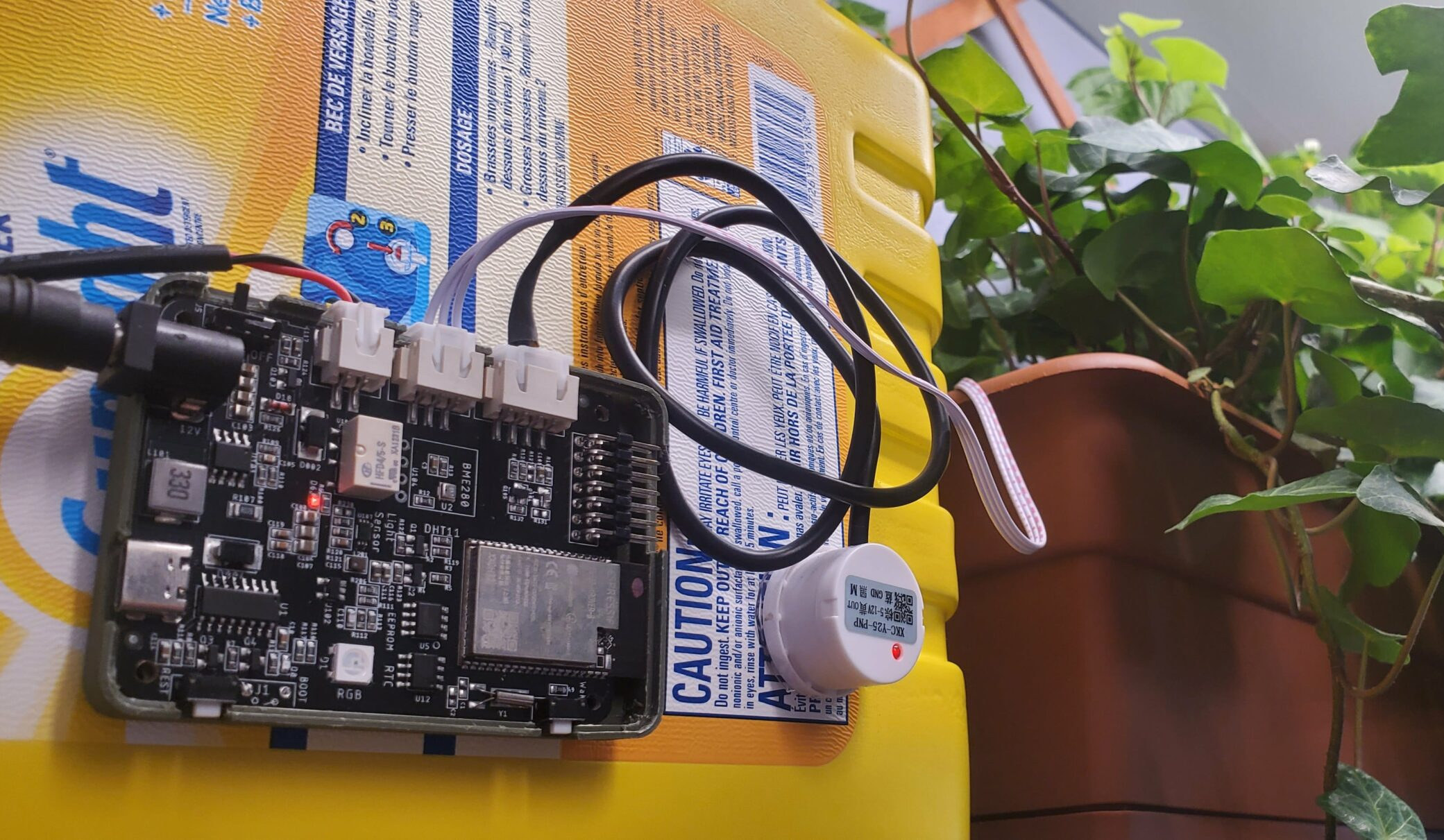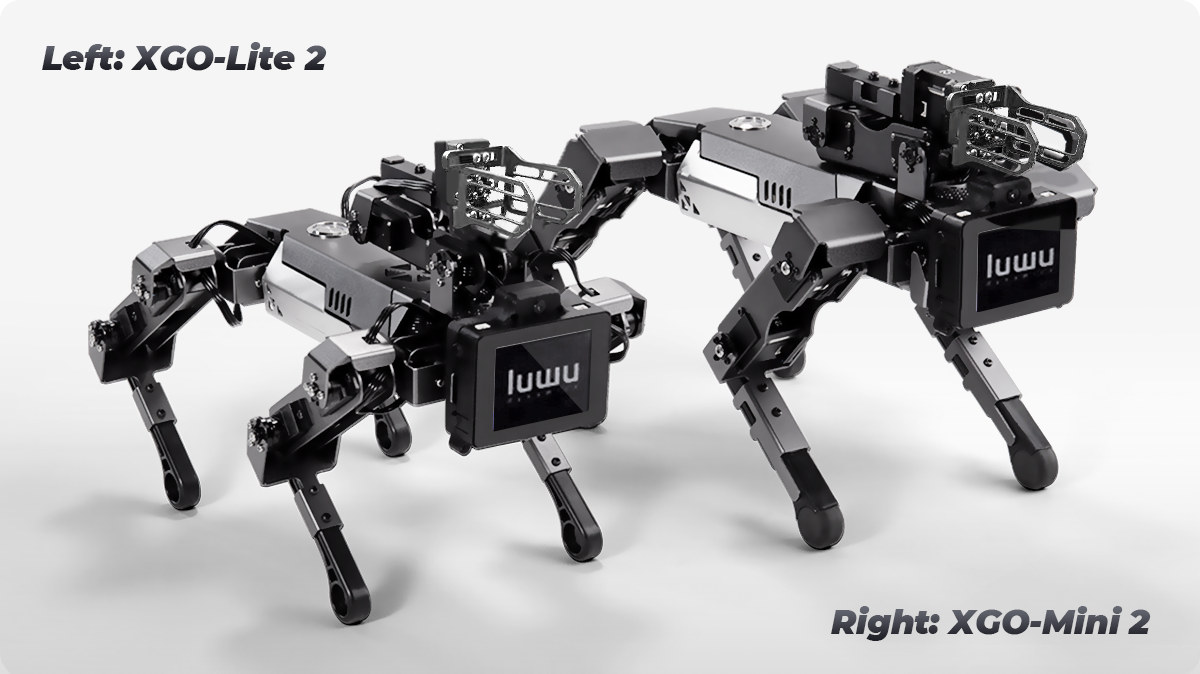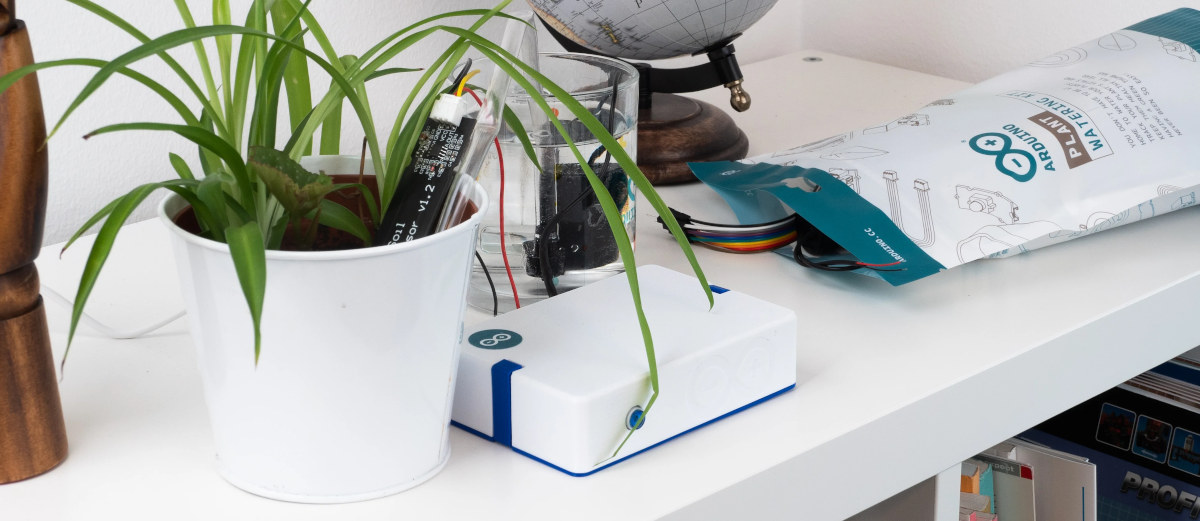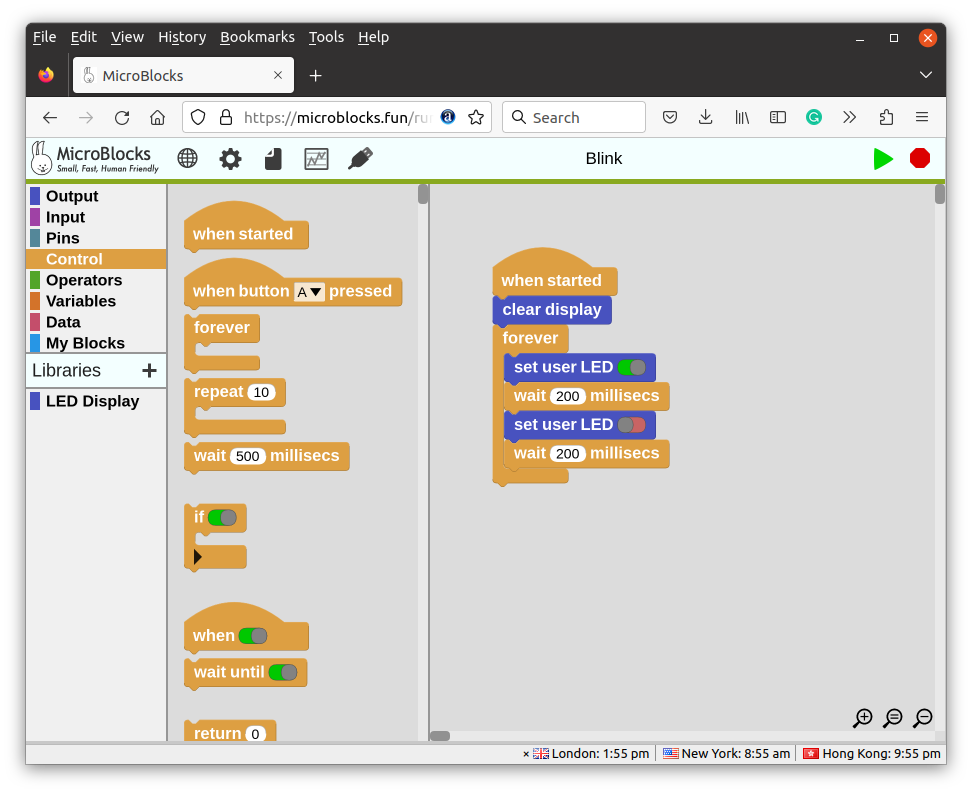T-Display-S3 Touch is an update to the T-Display-S3 “Basic” ESP32-S3 board that adds a 320×170 touchscreen using a CST816 I2C touchscreen sensor. The rest of the specifications remains the same with an ESP32-S3R8 dual-core WiFi and Bluetooth LE microcontroller, 16MB flash, a 1.9-inch 320×170 color display, a USB Type-C port, a few I/Os, and support for a LiPo battery. T-Display-S3 Touch specifications: Wireless MCU – Espressif Systems ESP32-S3R8 dual-core Tensilica LX7 @ up to 240 MHz with vector instructions for AI acceleration, 512KB RAM, 8MB PSRAM, wireless connectivity Storage – 16MB flash Connectivity via ESP32-S3 2.4 GHz 802.11 b/g/n Wi-Fi 4 with 40 MHz bandwidth support Bluetooth Low Energy (BLE) 5.0 connectivity with long-range support, up to 2Mbps data rate. PCB antenna and external u.FL antenna support Display – 1.9-inch 320×170 IPS full-color LCD using the ST7789V 8-bit parallel display controller and Shenzhen Zhengxin CST816 I2C touchscreen sensor. USB – […]
M5Stamp S3 WiFi and BLE IoT module offers up to 23 GPIOs through 2.54mm and 1.27mm pitch holes
M5Stamp S3, aka M5Stamp ESP32S2 or Stamp S3, is a tiny ESP32-S3 WiFi & Bluetooth LE (BLE) IoT module with a USB Type-C port, over 20 I/Os available through 2.54mm and 1.27mm pitch headers and castellated holes, and a heat-resistant cover. Many of the “new” ESP32-S3 hardware platforms launches these days are often updates from an ESP32 design, and the M5Stack’s M5Stamp S3 is no exception building on the original M5Stamp Pico, and its ESP32-C3 variants, namely M5Stamp C3 and C3U. M5Stamp S3 specifications: WiSoC – Espressif Systems ESP32-S3FN8 dual-core 32-bit Xtensa LX7 microcontroller with AI vector instructions up to 240MHz, RISC-V ULP co-processor, 512KB SRAM, 2.4GHz WiFi 4 (802.11b/g/n), Bluetooth 5.0 BLE + Mesh, 8MB flash as found in the M5Stack ATOMS3 (Lite). Connectivity 2.4 GHz WiFi 4, 20 MHz and 40 MHz bandwidth, IEEE 802.11 b/g/n protocol, up to 150 Mbps Bluetooth 5, Bluetooth Mesh, with supports for […]
ESP32 MPY-Jama is a MicroPython IDE for ESP32 boards
ESP32 MPY-Jama is a cross-platform MicroPython IDE specifically designed for ESP32 boards with a file manager, a REPL terminal, real-time dashboards, and various ESP32-specific features. The IDE is an open-source Python program using pyWebView and pySerial plus some JavaScript for the user interface, and the developer of the program, Jean-Christophe Bos, provides binaries for Windows 64-bit and macOS 64-bit Arm or x86. It’s also possible to use it in Linux but needs to be built from source. Some of the key features of the ESP32 MPY-Jama IDE include: MicroPython code editor with syntax highlighting REPL interface Access to information dashboards with real-time data about WiFi and Bluetooth connections, system info with GPIO status, CPU frequency, memory and SPI flash details Easy 2-click methods to connect to WiFi and create an access point Graphical interface to install a new firmware through esptool Ability to create, import, and run “Jama Funcs” mini-applications […]
M5Stack ATOMS3 Lite is a tiny ESP32-S3 IoT controller with WiFi, Bluetooth, and an infrared transmitter
ATOMS3 Lite is the latest ESP32-S3 IoT platform from the M5Stack Atom series wireless programmable controllers, doing without the 0.85-inch display and IMU sensor found in the ATOM S3 development kit simply using an RGB LED instead. M5Stack ATOM S3 Lite features the ESP32-S3FN8 WiFi and Bluetooth SoC with 8MB SPI flash, an infrared transmitter, a USB-C port for power and programming, a few I/O pins, user and reset buttons all in just a 24x24x9.5mm housing. ATOMS3 Lite specifications: Wireless MCU – Espressif Systems ESP32-S3FN8 dual-core 32-bit Xtensa LX7 microcontroller with AI vector instructions up to 240MHz, RISC-V ULP co-processor, 512KB SRAM, 2.4GHz WiFi 4 (802.11b/g/n), Bluetooth 5.0 BLE + Mesh, 8MB flash Antenna – Internal “3D” antenna Expansion 9x pins with G5, G6, G7, G8, G38, and G39 GPIOs, 5V, 3.3V, and GND 4-pin Grove connector Misc IR LED (infrared transmitter/blaster) WS2812B-2020 RGB LED Reset and user buttons M.2 […]
Eduponics Mini v2.0 Smart Agriculture IoT kit gets more flash, new sensors, 4-channel valve board (Crowdfunding)
Eduponics Mini v2.0 is a Smart Agriculture IoT kit based on the ESP32 wireless microcontroller with built-in sensors to measure temperature, humidity, barometric pressure, and ambient light, and interfaces to connect water level and soil moisture sensors. The new board builds upon the Eduponics Mini introduced two years ago, but based on the 8MB flash version of the ESP32-WROVER-B module, a different mix of sensors, a BM8563 RTC module replacing the DS1307 RTC chip, and the addition of Grove connectors for external sensors from companies such Elecrow. Eduponics Mini v2.0 specifications with highlights in bold or strikethrough showing the differences with the first revision of the board: Wireless module – ESP32-WROVER-B module with ESP32 Wi-Fi and Bluetooth SoC, 8MB QSPI flash loaded with MicroPyhon firmware, 8MB SPRAM, PCB antenna Built-in sensors BH1750 I2C light sensor Footprint for BME280 I2C temperature, humidity, and barometric sensor QMP6988 I2C Barometric air pressure sensor […]
XGO 2 – A Raspberry Pi CM4 based robot dog with an arm (Crowdfunding)
XGO 2 is a desktop robot dog using the Raspberry Pi CM4 as its brain, the ESP32 as the motor controller for the four legs and an additional robotic arm that allows the quadruped robot to grab objects. An evolution of the XGO mini robot dog with a Kendryte K210 RISC-V AI processor, the XGO 2 robot offers 12 degrees of freedom and the more powerful Raspberry CM4 model enables faster AI edge computing applications, as well as features such as omnidirectional movement, six-dimensional posture control, posture stability, and multiple motion gaits. The XGO 2 robot dog is offered in two variants – the XGO-Lite 2 and the XGO-Mini 2 – with the following key features and specifications: The company also says the new robot can provide feedback on its own postures thanks to its 6-axis IMU and sensors for the joints reporting the position and electric current. A display […]
Arduino Plant Watering Kit combines Nano RP2040 Connect with moisture sensor and submersible pump
You’ve probably seen a few plant watering projects based on Arduino over the years, and now the company has decided to launch its own Arduino Plant Watering Kit based on the Arduino Nano RP2040 Connect board and everything you need to get started to water your indoor plants. Arduino Plant Watering Kit content: Arduino Nano RP2040 Connect board (ABX00053) with Raspberry Pi RP2040 MCU, ESP32 module for WiFi, and Bluetooth LE connectivity. Arduino Nano Screw Terminal Adapter (ASX00037) Open-ended USB cable with on/off switch 5V submersible pump 1-meter of plastic hose Grove moisture sensor Grove relay module with cable Grove LED button module with cable Grove cables 50 cm 10x Jumper wires (15 cm) 12x screw connectors Simply connect the moisture sensor and the water pump (through the relay) to the Nano RP2040 Connect board, insert the moisture sensor in a flower pot, and put the pump in a recipient […]
MicroBlocks is a visual programming IDE for 32-bit microcontrollers
MicroBlocks is a visual programming IDE for 32-bit microcontrollers currently supporting the BBC Micro:bit V1/V2, Calliope mini (aka the German Micro:bit), Adafruit Circuit Playground Express and Bluefruit, Raspberry Pi Pico and Pico W, and various other boards including ESP32 and ESP8266-based boards. I discovered MicroBlocks in the list of talks for FOSDEM 2023, and although it did not make it to my virtual schedule, I thought it was interesting to look into and write about it. In their upcoming FOSDEM talk, Bernat Romagosa and Kathy Giori refer to MicroBlocks as small, fast, and human-friendly with development guided by four guiding principles: liveness, parallelism, portability, and autonomy. The IDE is inspired by Scratch, and as such, looks very similar to other visual programming interfaces I have used over the years. You can launch MicroBlocks from Google Chrome or Microsoft Edge on a PC (not a mobile device) without having to install […]


